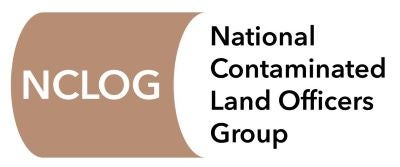Land contamination
Why do you need to know about land contamination?
This content in this section is provided on behalf of the Environment Agency1 and the National Contaminated Land Officers Group.
- https://www.gov.uk/government/publications/land-contamination-risk-management-lcrm

‘Where a site is affected by contamination or land stability issues, responsibility for securing a safe development rests with the developer and/or landowner’.
(Paragraph 189, National Planning Policy Framework1)
- https://www.gov.uk/guidance/national-planning-policy-framework/15-conserving-and-enhancing-the-natural-environment
What is land contamination?
Land may be affected by contamination if substances present in, on or under the land are actually, or potentially hazardous, to people and/or the environment. Land contamination can occur as a result of the historical use of any given site or surrounding land. It can also occur because of naturally occurring sources, such as underlying rock. Contamination may be present in various forms, including chemical, biological or radioactive. Any previously used land, often referred as ‘brownfield land’, has the potential to be affected by land contamination.
The presence of contamination does not necessarily present an unacceptable risk. Risks from contamination are site specific and can vary significantly depending on the nature of a site’s previous use and the type of the proposed development. Determining the risks requires a land contamination risk assessment. Whilst it is uncommon to preclude development of a site completely, it is essential that this risk is appropriately assessed and forms an integral part of any scheme.
Why is it important to consider land contamination in the planning process?
As a developer or planning agent, you need to consider whether the development site could be affected by contamination and require remediation before you submit your planning application.
New development on sites with land affected by contamination can create risk by exposing land contamination during the development process, by creating new pathways and by introducing new ‘receptors’ i.e., something that can be adversely affected by contamination such as a person, controlled waters or an ecosystem.
Failure to deal adequately with contamination could cause harm to human health, property, and the wider environment. It could also limit or preclude new development.
Why develop land potentially affected by contamination?
At the heart of the National Planning Policy Framework1 (NPPF) is a presumption in favour of sustainable development. The NPPF states that planning policies and decisions should give substantial weight to the value of using suitable brownfield land within settlements for homes and other identified needs, and support appropriate opportunities to remediate despoiled, degraded, derelict, contaminated or unstable land. It also promotes consideration of development on land of lesser environmental value. All these aspects support the redevelopment of potentially contaminated sites.
Development of a site with land contamination issues is an ideal way to secure an improvement in the environment, providing that it results in a safe development that creates no unacceptable risks to human health or the environment. The NPPF states that the purpose of the planning system is to achieve sustainable development which is viable and deliverable.
What does the LPA need to know about sites affected by land contamination?
Land contamination is a ‘material planning consideration’ for sites known or suspected to be contaminated. Before granting planning permission, the Local Planning Authority2 (LPA) should, among other matters, be satisfied that:
- it understands the contamination condition of the site.
- the proposed development will not pose an unacceptable risk.
- it has sufficient information to be confident that it will be able to grant permission bearing in mind the need for the necessary remediation to be viable and practicable.
If you submit the right information produced by a ‘competent person’ as specified in the NPPF, it is likely to:
- Reduce the likelihood of receiving objections to your application.
- Enable the project to proceed on time and minimise delays.
- Enable the LPA to decide your application/ approval of details.
- Reduce the quantity/ scope of recommended conditions relating to land contamination and give the LPA the opportunity to tailor any conditions appropriately.
- Reduce the risk of delays caused by adverse environmental searches when selling properties.
- Provide confidence that the health of future residents or site users will not be at risk from contamination.
- Reduce the risk of future liability in relation to land contamination issues.
Failure to submit the correct land contamination information may lead to delays in the planning process, risks to financial investments, warranties or insurances and even refusal in planning consent.
Find out more about land contamination3 on Gov.uk, and how to manage the risks when developing a site.
- https://www.gov.uk/government/publications/national-planning-policy-framework--2
- https://www.planningportal.co.uk/find-your-local-planning-authority
- https://www.gov.uk/government/publications/land-contamination-risk-management-lcrm